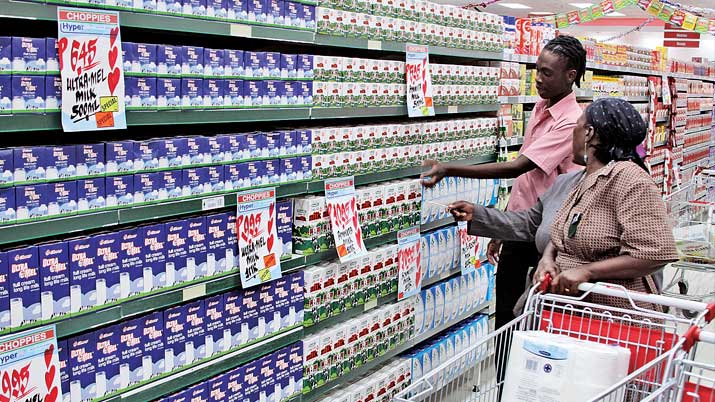Local economists have projected a continued decrease in the national inflation rate due to stable prices across a range of products. This fall will be within Bank of Botswana’s (BoB) objective range of three to six per cent.
According to Statistics Botswana’s Consumer Price Index report released on Friday, the August 2013, national annual inflation rate was 5.6 per cent, a decrease of 0.1 of a percentage point from 5.7 per cent recorded in July 2013.
The annual rate of 5.6 per cent realised in August 2013 was also lower than the 6.6 per cent recorded during the same month in 2012. The decrease on the overall annual rate was mainly due to stable prices of food and non-alcoholic beverages among others.
In an interview with Gazette Business, market analyst at Motswedi Securities, Garry Juma highlighted that this is good news because there has been a small increase in prices as compared to last year. “This provides a slight relief to the households. It compelled the BoB to reduce the bank rate. Nonetheless, the gross domestic product cannot be pinned down by inflation, as it is mostly imported from neighbouring South Africa. It lies heavily on the performance of the diamonds,” he said. Going forward, the analyst said inflation is expected to weaken and by December 2013 the projection will be around 4 per cent due to stable prices across a range of products and base effects.
A macroeconomist, and also a lecturer of Economics at the University of Botswana, Mogale Ntsosa said that the inflation rate of 5.6 per cent is significant because it falls within the BoB’s target range. Thus the BoB is likely going to keep interest rates at a low level. Since April 2013 the inflation rate has been falling every month, which he said is to be expected as the global economy is failing to get traction.
“As we are dependent on exports, our economic performance is expected to be relatively unspectacular. Unless a significant event occurs the rate is expected not to increase. The agreement reached by US and Russia over Syrian chemical weapons has postponed the likelihood of instability in the Middle East that had the potential to raise oil prices,” Ntsosa has observed. He further added that another event that may disrupt the inflation is the on-going union strikes in the neighbouring South Africa.
He said the inflation rate should be expected to continue to fall but at a minimal rate. In E-consult’s economic review of the 2013 second quarter (Q2) recently, by economists Dr Keith Jefferis and Thabelo Nemaorani, inflation fell sharply, from 7.6 per cent in March to 5.8 per cent in June. “This reflects a number of developments, including base effects whereby some large price increases in Q2 2012 dropped out of the calculation, combined with weak underlying inflationary pressures. Inflation has therefore fallen within the BoB objective range of 3-6 per cent for the first time since early 2010,” the economists said in their review.
Notwithstanding a likely increase in fuel prices, which could push the rate up temporarily, E-consult review projects that inflation is generally expected to continue on its downward trajectory in the second half of 2013. “We forecast inflation to end the year below 5 per cent. The second quarter of 2013 saw two cuts of 0.5 per cent each in the BoB’s main policy interest rate, the Bank Rate. The BoB Monetary Policy Committee noted that owing to subdued domestic demand and projected low external inflationary pressures, some non-inflationary economic stimulus was necessary. Following the cuts, the Bank Rate was 8.5 per cent, the lowest level since December 1990,” noted the economists.

